Autonomous Crop Management Market: Shocking U.S. Tech Trends!
Autonomous crop management is transforming the face of agriculture in the United States, with groundbreaking AI in agriculture and precision farming technologies setting new benchmarks for efficiency, sustainability, and productivity. As we dive into this rapidly evolving sector, we’ll uncover how autonomous systems, smart machinery, and real-time data are empowering farmers to automate routine tasks, optimize resource management, and address the pressing concerns of labor shortages and environmental stewardship.
Let’s explore how leading autonomous farming systems and agricultural automation solutions are redefining American farming, who is driving this technological revolution, what challenges remain, and where promising new opportunities are emerging. Along the way, we’ll highlight how platforms like Farmonaut are lowering the barriers to adoption, democratizing access to IoT-enabled agriculture, and empowering all farm sizes with next-generation autonomous crop management tools.
Market Overview: The Growth of Autonomous Crop Management
The autonomous crop management market has witnessed tremendous growth, reflecting the urgent demand for more efficient, sustainable, and data-driven farming practices. According to Grand View Research, in 2022, the global autonomous crop management market generated a revenue of USD 1,683.4 million. With a projected market size reaching USD 5,581.6 million by 2030 and a robust compound annual growth rate (CAGR) of 16.2% from 2023 to 2030, the sector’s momentum is undeniable.
North America has emerged as a dominant player, accounting for 37.2% of the global revenue in 2022. The United States stands at the forefront of this transformation, setting standards and trends that are likely to define the future of autonomous crop management worldwide.
What’s fueling this exponential growth? The confluence of labor shortages in farming, technological leaps in artificial intelligence and the Internet of Things (IoT), and a mounting imperative for sustainable farming practices is ushering in a new era for the agricultural sector.
Key Market Drivers Behind U.S. Autonomous Crop Management Growth
Why are autonomous crop management systems seeing record adoption and growth in the United States? Let’s closely examine the most influential factors.
1. Labor Shortages and Demand for Efficiency
- Labor Shortages: The U.S. agricultural sector faces a persistent shortage of skilled workers. As fewer people enter farming and existing workforce ages, the need to automate tasks such as planting, irrigation, and harvesting has become urgent.
- Efficiency Gains: Autonomous solutions enhance farm productivity by reducing human labor dependency, streamlining operations, and enabling 24/7 operation on large farms, even in challenging conditions.
💡 Example: Automated tractors can plant, fertilize, and harvest with minimal human intervention, mitigating the effects of labor shortages during peak seasons.
2. Technological Advancements: AI, IoT, and Data-Driven Agriculture
- Artificial Intelligence (AI): Modern autonomous crop management relies on AI for analyzing real-time data, predicting disease outbreaks, and optimizing resource allocation across vast farms.
- IoT-Enabled Agriculture: A network of IoT sensors collects atmospheric, soil, and crop data. Automation software processes this input for actionable insights.
- Machine Learning & Computer Vision: Precision weeding and targeted chemical application (e.g., through robotic weeders or drones) reduce input waste and environmental impact.
For instance, Farmonaut leverages advanced satellite-based monitoring and AI advisory systems to provide real-time crop health insights for large-scale farm management, empowering both individual farmers and agribusiness executives.
3. Sustainability and Precision Agriculture Technologies
- Sustainable Practices: With climate change pressures, there’s heightened focus on reducing water and pesticide usage, improving soil health, and ensuring long-term farm viability.
- Precision Agriculture: Data-driven management enables targeted irrigation, fertilizer application, and pest control, significantly lowering costs while maximizing yield.
Technologies like multispectral satellite imaging (available in Farmonaut’s platform) empower farmers to make highly precise decisions—an essential element of sustainable agriculture.
Technology and Innovation Trends Shaping U.S. Autonomous Crop Management
The ever-expanding landscape of autonomous crop management is brimming with innovation. From next-generation robotics to drones in crop monitoring, let’s break down the most impactful trends in U.S. agriculture.
1. Integration with Smart Precision Agriculture Technologies
- Seamless integration of autonomous hardware with precision agriculture software platforms provides data-driven recommendations for crop management, disease detection, irrigation schedules, and more.
- Farmonaut’s Jeevn AI Advisory System combines satellite-sourced crop data with weather forecasts and machine learning models, enhancing resource management and boosting yields.
Precision agriculture technologies not only improve efficiency, but also align with the sustainability goals of modern farmers.
2. Drones in Crop Monitoring and Aerial Analytics
- Drone-based surveillance is revolutionizing crop monitoring. Drones equipped with advanced sensors and cameras provide high-resolution aerial imagery, enabling detection of soil conditions, crop diseases, and water stress—crucial for precision farming.
- Regular drone flights across large farms automate scouting, saving time while generating actionable maps for targeted interventions.
💡 Did you know? Autonomous drone missions are particularly effective in scanning vast agricultural areas that were previously impractical to monitor frequently by human workers.
3. Adoption of Subscription-Based Models for Technology Access
- High initial investment has often been a barrier, especially for small farms. Now, leading agri-tech companies—including Farmonaut—are offering subscription-based models. This reduces upfront costs and democratizes technology access.
- Farmers pay monthly or annually, ensuring manageable operational costs while gaining access to continuously updated autonomous crop management solutions.
4. Blockchain for Traceability and Transparency
- Traceability: Blockchain-based product traceability is elevating transparency across agri-food supply chains. Each product batch can be tracked from planting to sale, enhancing food safety and consumer trust.
- Farmonaut’s blockchain traceability solution ensures every stage of agricultural production is securely recorded—a critical feature for both regulatory compliance and customer assurance.
5. Robotic Harvesters and Mechanical Weeders
- Advancements in robotics and computer vision have produced automated weeders and harvesters capable of delicately picking fruits or vegetables and removing weeds with minimal human intervention.
- For example, machines like the Titan FT-35 (by FarmWise Labs) and open-source FarmBot systems are already operational on U.S. farms, reducing both physical labor and chemical usage.
6. Fleet and Resource Management Tools
- Large-scale U.S. farms leverage advanced fleet tracking to monitor the location, movement, and operational status of autonomous machinery and support vehicles.
- Tools like Farmonaut’s fleet management service optimize routes, maintain safety, and reduce operational costs.
Market Restraints and Challenges Facing Autonomous Crop Management
Despite its promise, several challenges threaten to slow the widespread adoption of autonomous crop management technologies in the U.S. agricultural sector. Let’s scrutinize these hurdles and potential workarounds.
1. High Initial Investment and Ownership Costs
- Even as prices decline, the up-front costs for advanced autonomous machinery, sensors, and software platforms remain prohibitive for many small and mid-sized farms.
- Maintenance, technical support, and regular updates can add ongoing financial burden.
Solution Highlight: Subscription models like Farmonaut’s (see below for pricing table) mitigate financial shocks, offering flexible service tiers based on area, frequency, and modules required.
2. Technical and Operational Complexity
- Farmers need to learn and maintain increasingly sophisticated software and hardware. Limited digital literacy or support infrastructure can hinder confidence and adoption.
Access Farmonaut’s user-friendly mobile/web farm management platform or explore API integration for large-scale/enterprise users: Farmonaut API | Developer Docs
3. Limited Access in Developing and Rural Areas
- Infrastructure gaps (e.g., internet connectivity, electricity) still limit the availability of autonomous systems in some U.S. rural regions and in developing countries.
- The persistence of the digital divide may restrict access to the benefits of IoT-enabled agriculture and advanced solutions.
Platforms that deliver insights via multiple channels (API, web, Android, iOS) and operate with low bandwidth—like Farmonaut—help bridge this gap.
4. Data Security, Privacy, and Ecosystem Interoperability
- As sensitive farm and supply chain data are increasingly digitized, ensuring robust security and privacy measures becomes crucial.
- Seamless data exchange between different equipment brands and software services can remain a challenge unless standards are improved.
Farmonaut’s secure, blockchain-based traceability solutions help protect against data tampering and ensure reliable, transparent records.
Comparative Technology Adoption Table: U.S. Autonomous Crop Management
| Technology | Estimated 2023 U.S. Adoption Rate (%) | Efficiency Improvement (%) | Sustainability Impact |
|---|---|---|---|
| AI-driven Drones for Crop Monitoring | 40 | 25–40 | Up to 50% reduction in pesticide/fertilizer use through targeted application |
| Robotic (Autonomous) Tractors | 35 | 20–30 | 15% drop in fuel usage/soil compaction; less chemical run-off |
| Precision Irrigation Systems (IoT) | 55 | 15–25 | Up to 35% reduction in water wastage; enhanced yields |
| Mechanical Weeders/Robotic Harvesters | 22 | 18–22 | Minimal herbicide use; reducing human labor dependency |
| Satellite-Based Crop Health Monitoring | 48 | 20–35 | Early pest/disease identification, optimizing inputs; carbon footprint mitigation |
| Blockchain Traceability Solutions | 18 | 10–15 | Enhances supply chain transparency & reduces food fraud |
Farmonaut: Accelerating Autonomous Crop Management Adoption
As we’ve explored, transitioning to autonomous crop management systems demands access to advanced, affordable, and easy-to-deploy agriculture technology. Farmonaut is a leader in making these smart farming innovations available to farmers, agribusinesses, governments, and financial institutions worldwide.
Farmonaut Technologies for Autonomous Crop Management
- Satellite-Based Crop Health Monitoring: Farmonaut utilizes multi-spectral satellite imagery for real-time insights into crop vegetation health, soil moisture, and stress indices—empowering data-driven resource allocation.
- AI-Powered Farm Advisory: The Jeevn AI Advisory System blends crop data analytics, weather forecasts, and machine learning to deliver in-app advice for optimized planting, irrigation, and pest management.
- Blockchain Traceability: With blockchain integration, Farmonaut promotes product authenticity and traceability at each stage of the supply chain, bolstering regulatory compliance and consumer trust.
- Fleet & Resource Management: Fleet management features enable efficient scheduling, tracking, and safe utilization of tractors, drones, and support vehicles across farms.
- Carbon Footprinting: Carbon tracking tools allow farms and agribusinesses to quantify and actively reduce their environmental impact.
Farmonaut’s Accessible Business Model
- Subscription-Pricing: Flexible, area-based subscription packages for all farm sizes eliminate high up-front costs and let customers scale services as needed.
- Multi-Platform Access: Farmonaut is available across web, Android, iOS, and via API, ensuring wide accessibility for users in diverse regions and with varying tech infrastructure.
- API Integration: Enterprises and developers can integrate rich satellite and weather data from Farmonaut straight into their systems via the Farmonaut API (Developer Docs).
- Product-Specific Tools: Ideal for farmers, agribusinesses, or governments seeking crop loan and insurance verification or large-scale farm management.
Key Farmonaut Value Propositions
- Cost-Effective: Farmonaut brings precision agriculture to all, providing high-impact results without expensive on-field hardware.
- Increased Productivity: Real-time crop health, environmental, and predictive analytics help maximize yields and minimize crop loss.
- Sustainability: Farmonaut’s tools enable carbon tracking, water/resource optimization, promoting eco-friendly agricultural practices.
- Transparency and Trust: Blockchain-based traceability solutions offer authenticity—vital for supply chains in food and textiles.
- Scalability: Modular for individual fields to national-scale farm programs.
- Ease of Financing: Satellite-based crop loan and insurance verification streamlines risk for lenders.
Impact on Labor and Workforce: Transforming Farm Jobs & Roles
Shifting to autonomous crop management transforms the traditional farm labor landscape. Let’s analyze the benefits and risks for American workers, managers, and rural economies.
- Addressing Labor Shortages: Automation provides a solution to critical labor shortages in farming. Vital fieldwork continues regardless of workforce ups and downs, ensuring food security.
- Efficiency, Not Just Replacement: Autonomous technologies enhance per-worker productivity and reduce risks of human error or fatigue.
- Upskilling Workforce: While some traditional roles may decrease, new opportunities emerge for skilled operators, data analysts, system maintainers, and “agri-tech managers”.
- Potential Displacement: As reported by the AP News, concerns persist regarding displacement in communities with heavy agricultural employment. Policy and training efforts are needed to support workforce transitions.
Ultimately, sustainable adoption of autonomous systems hinges on pairing technological innovation with investments in education, support, and inclusive labor strategies.
Future Outlook and Emerging Opportunities in U.S. Autonomous Crop Management
The U.S. autonomous crop management market will continue to be the epicenter of global innovation—here’s what the future holds:
- Wider Ecosystem Integration: Autonomous solutions will further integrate with upstream (seed selection) and downstream (supply chain, retail) systems. Supply chain traceability and IoT-enabled agriculture will expand.
- Regulation and Policy Support: Public policy, financial incentives, and inter-agency collaboration can accelerate adoption in developing regions and among mid/smallholders.
- Next-Gen Robotics and AI: Expect rapid innovation in the fields of autonomous harvesters, sprayers, and on-the-fly field analytics—enhancing both commercial and specialty crop productivity.
- Data-Driven Financing: Lenders and insurers will increasingly rely on satellite-verified digital farm data for loans and risk assessment.
- Global Leadership: The U.S. will remain a primary testbed, exporting best practices and technology to global markets in Latin America, Asia-Pacific, and Africa.
Stakeholders—including farmers, agritech startups, policymakers, and support service providers—are invited to collaborate and shape this future for a resilient and sustainable agricultural sector.
FAQ: Autonomous Crop Management & AgriTech
-
What is autonomous crop management?
It is the use of advanced hardware and software (like robots, drones, AI-driven analytics, IoT sensors, and satellite imagery) to automate and optimize agricultural tasks—including planting, irrigation, fertilizing, monitoring, harvesting, and pest control—with minimal human intervention. -
Why is autonomous crop management growing rapidly in the U.S.?
Because of labor shortages, the need to increase yields sustainably, and surged investments in precision agriculture technologies and data-driven solutions. -
Which farm sizes benefit from these solutions?
All farm sizes: Large agribusinesses gain from economies of scale, while advanced platforms like Farmonaut are making these tools cost-effective and accessible for small and mid-sized farms via subscriptions. -
Can autonomous solutions reduce costs and boost yield?
Yes. Precision agriculture and autonomous machinery reduce labor, water, fuel, and input costs, while often increasing productivity by up to 30% or more through optimized processes. -
What about data privacy and security?
Platforms with blockchain-enabled traceability, such as Farmonaut, ensure secure data storage and transparent, tamper-resistant records. -
How can I access Farmonaut’s solutions?
Via web, Android, iOS, or API—simply sign up or subscribe to begin reducing risk, improving efficiency, and advancing sustainability on your farm or agribusiness.
In conclusion, autonomous crop management is not just a fleeting trend—it represents the foundation of a smarter, more resilient agricultural future in the United States. As AI, IoT, and precision solutions from companies like Farmonaut continue to advance, American farms, both small and large, are better positioned than ever to optimize productivity, reduce risks, and practice sustainable farming. Through partnerships, policy, and continued innovation, we can ensure these gains translate into benefits for everyone in the global food system.


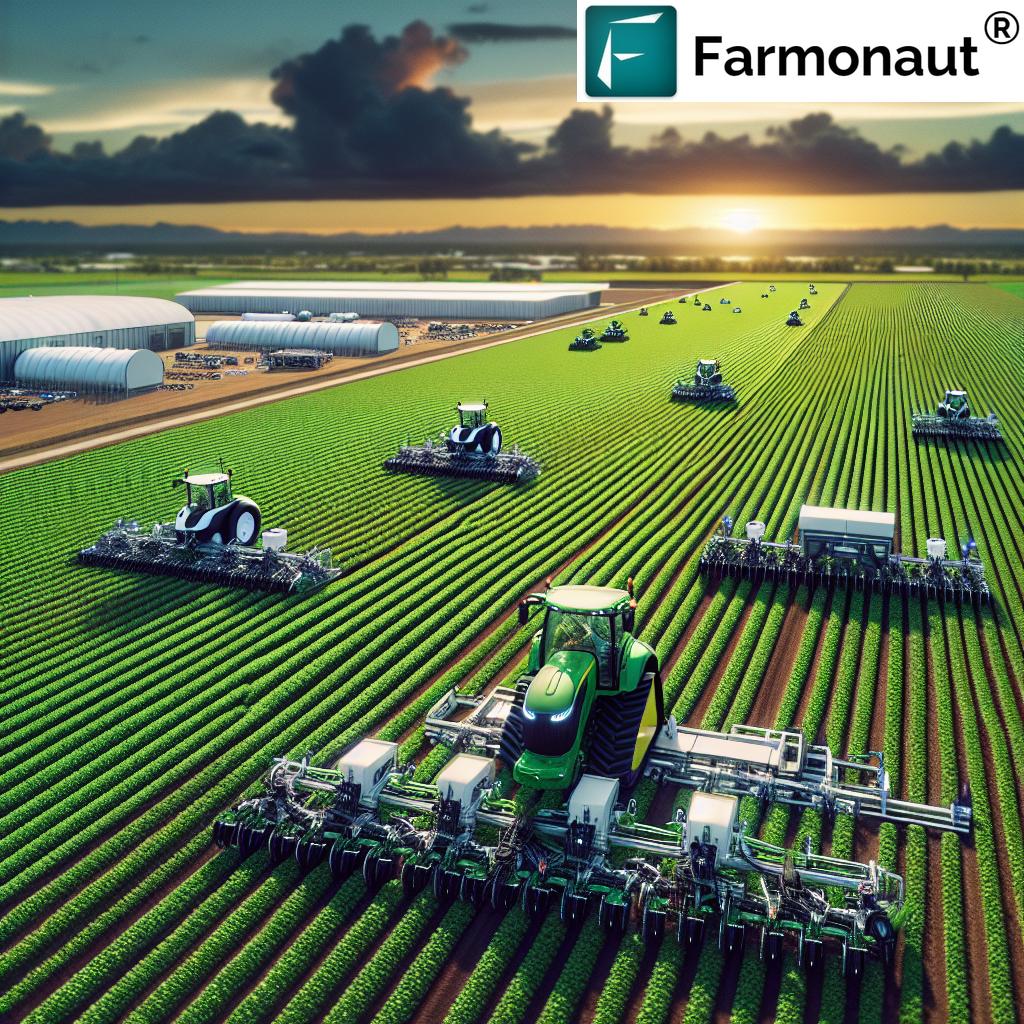
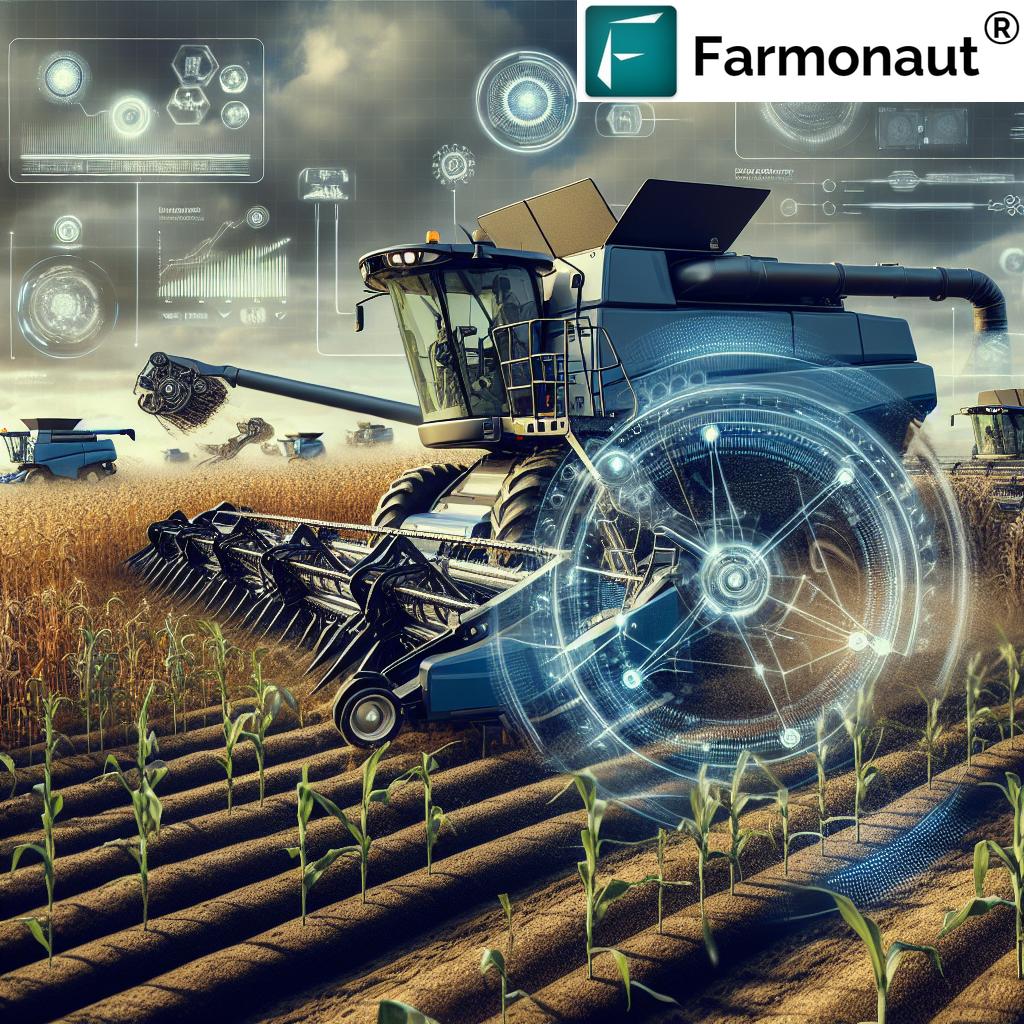







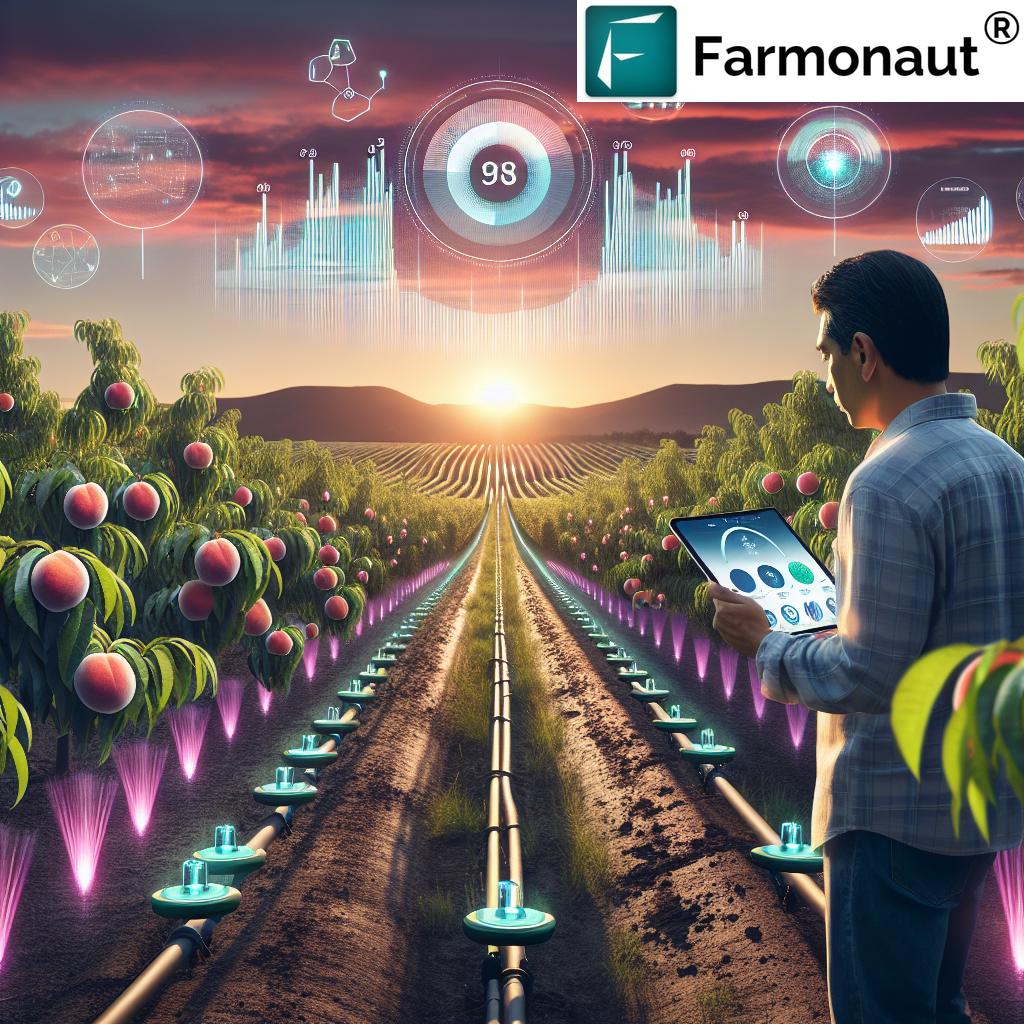
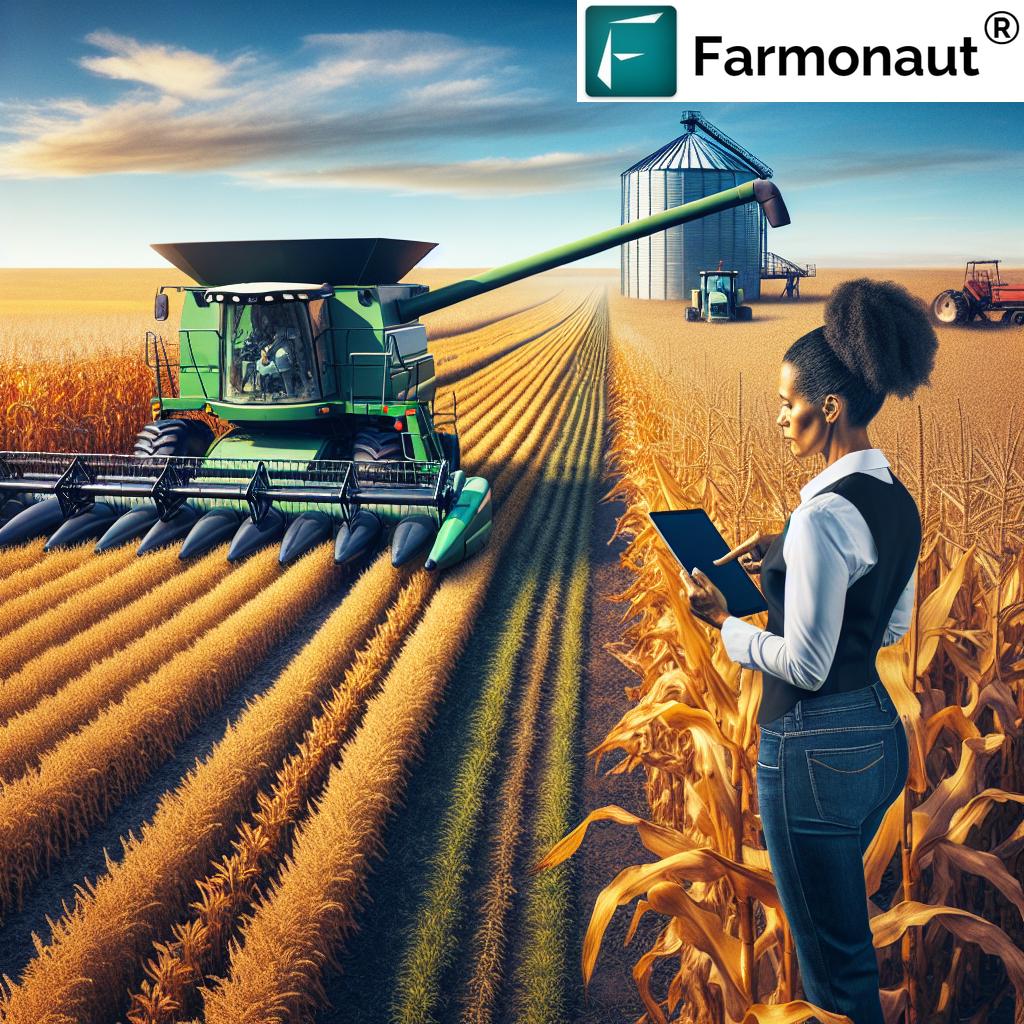

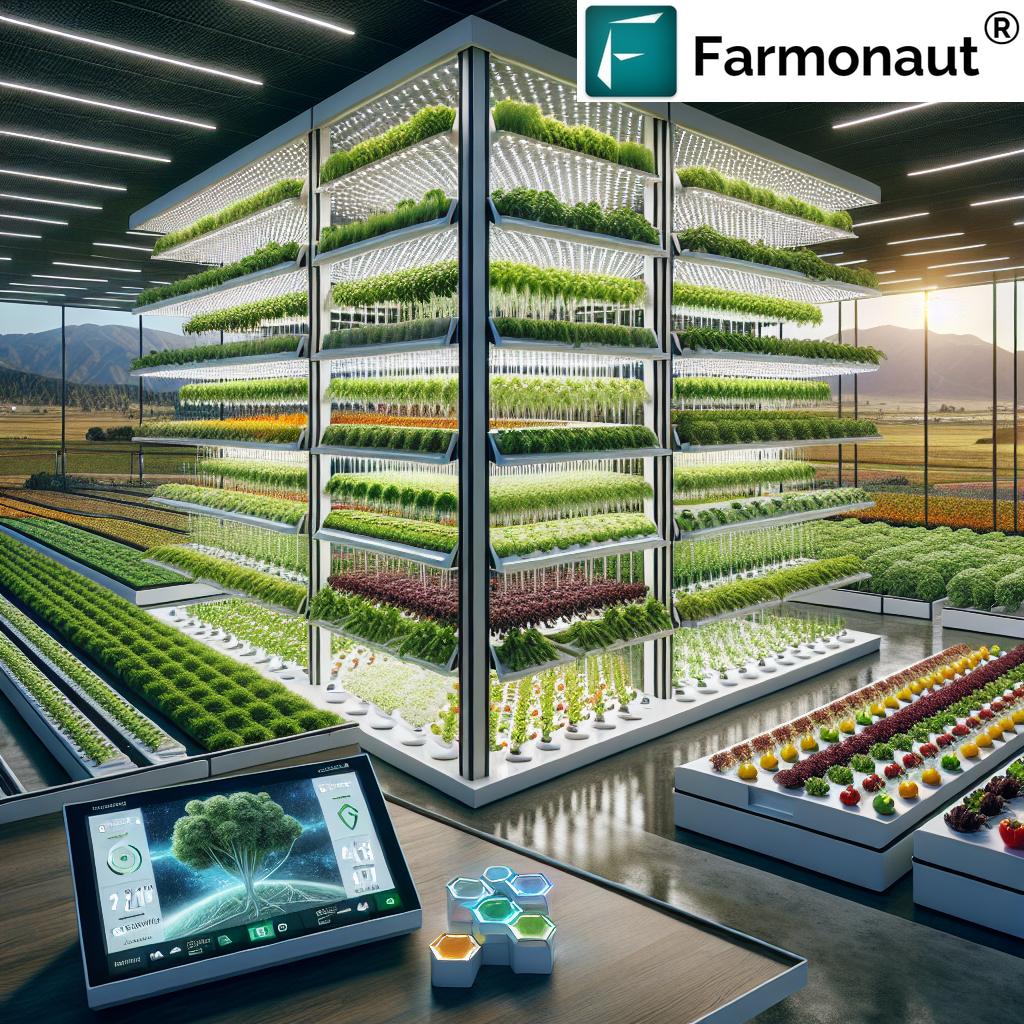

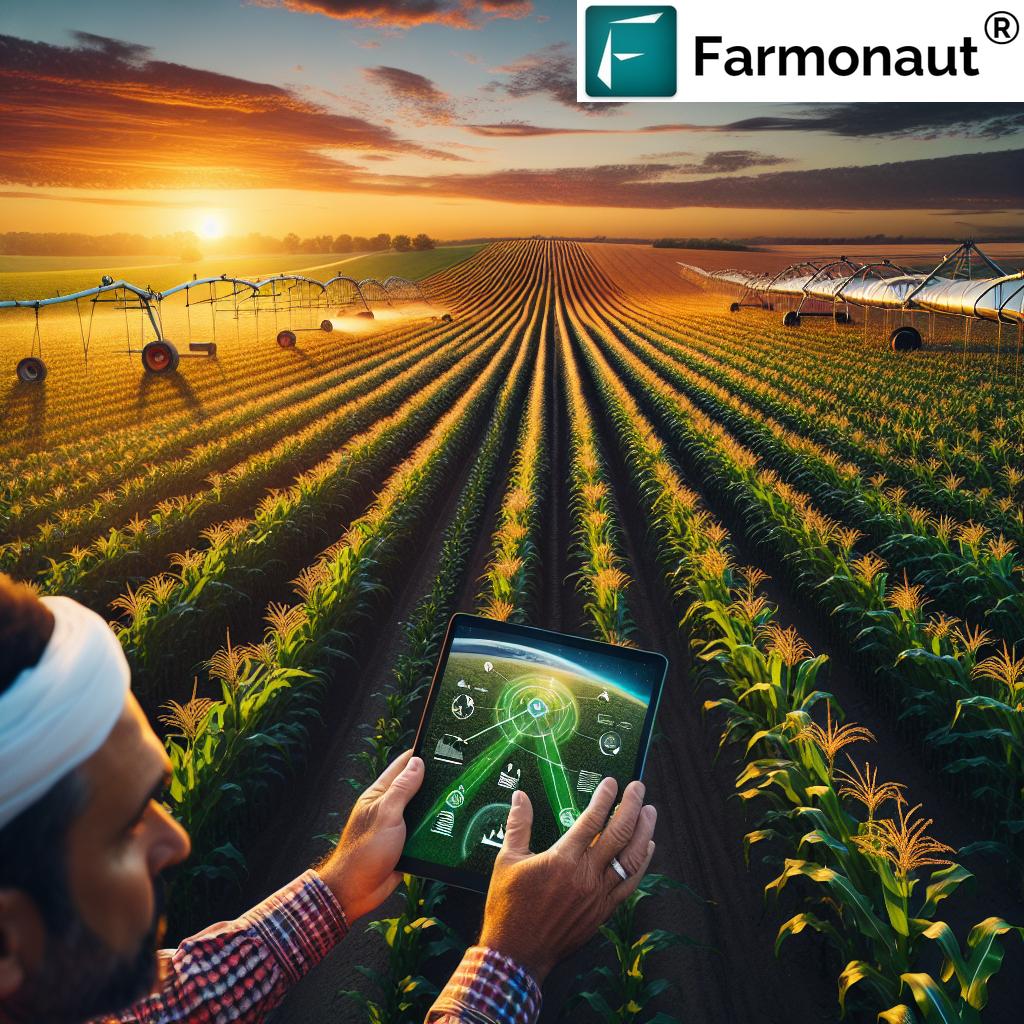





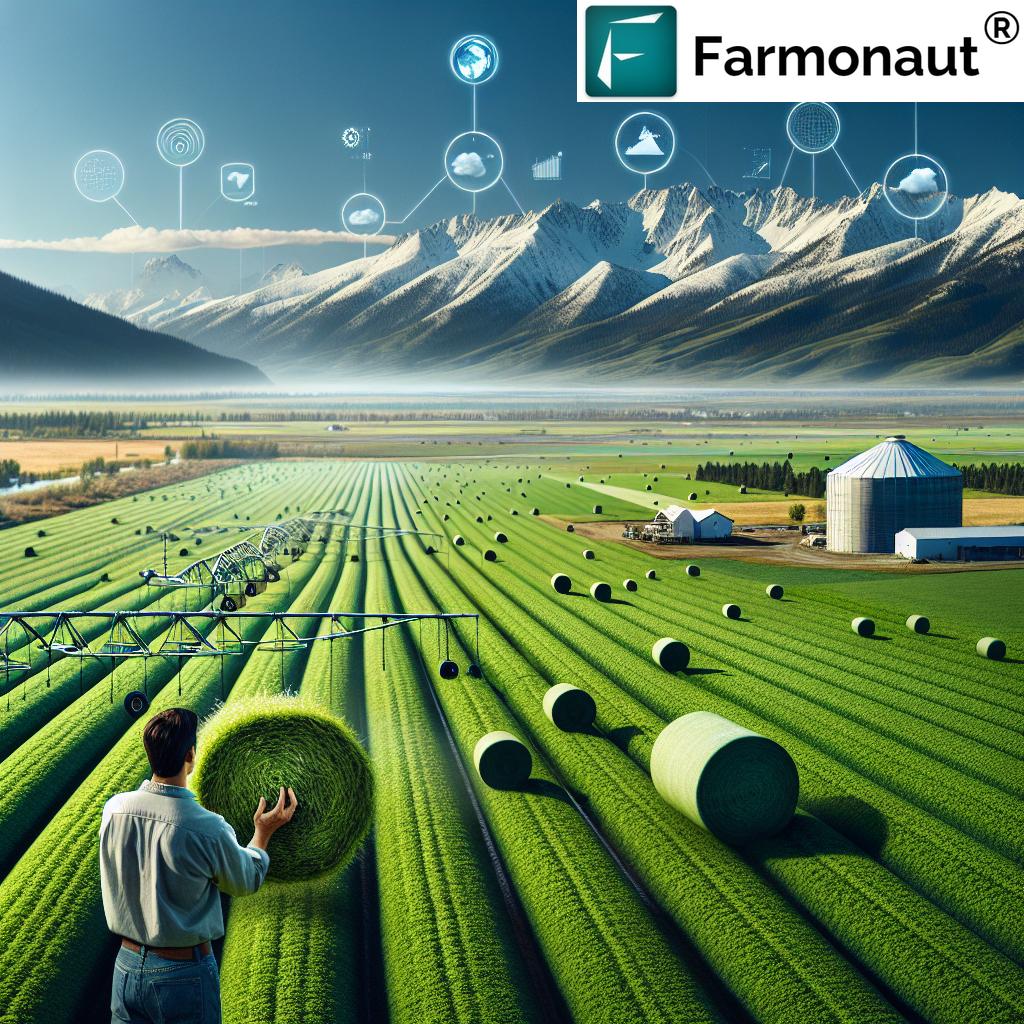
test